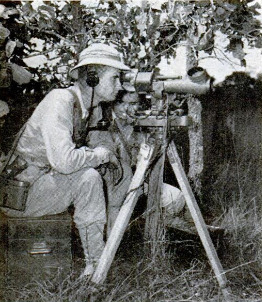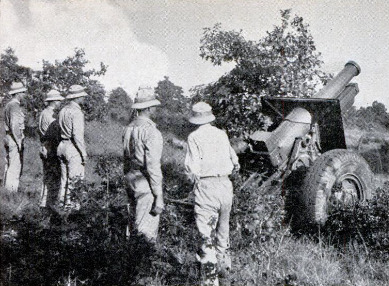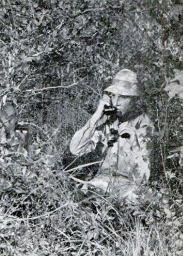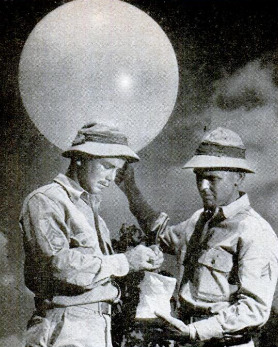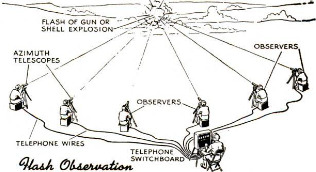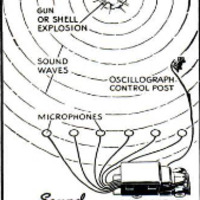Sensitive microphones spot hidden guns
Item
-
Title (Dublin Core)
-
Sensitive microphones spot hidden guns
-
Article Title and/or Image Caption (Dublin Core)
-
Title: Sensitive microphones spot hidden guns
-
extracted text (Extract Text)
-
ADARK NIGHT of impenetrable fog.
The enemy’s heavy artillery has
found the range and is blasting away,
even its flashes invisible. Death hurtles in
from an unknown source.
The enemy shells cause terrific havoc, but
not for long. This situation is duck soup
for the Observation Battalion attached to
the artillery of each American army corps.
‘Within a few minutes, simply by
calculations from sound waves,
it has located the enemy battery
and American guns return the
fire with deadly accuracy. Simi-
larly, by listening for the bursts
of friendly shells, the sound-ob-
servation platoon can check the
precision of the American fire.
Improved since the first World
‘War, the technique of sound ob-
servation is based on the fact
that sound waves, in still air at
50 degrees Fahrenheit, travel
369.2 yards per second. By plac-
ing low-frequency microphones
along a surveyed base (which
may be as much as 10,000 yards long) it is
possible to measure the differences in time |
required for an expanding circle of sound |
waves to reach the various microphones. |
From these are calculated the gun's location. |
Corrections must be made for speed and |
velocity of wind and for temperature, up to
several hundred feet above the earth; and |
accuracy depends on the skill with which
the battalion’s meteorological section meas- |
ures these factors. The best time for sound
observation is a foggy night.
‘When conditions are unfavorable, the Ob-
servation Battalion must depend entirely on |
the older system of observing the flashes of |
enemy guns, from widely separated points, |
and taking bearings on them. Used in com-
bination, the two methods provide a detection
system which puts any enemy gun in peril
within a few minutes.
It takes several hours to
install an accurately sur-
veyed sound base. At each
of six equidistant points is
placed a microphone, which
looks like a large tin can,
is acoustically resonant,
and is so constructed as
to cut out high frequencies such as ma-
chine-gun fire. |
All the microphones .are electrically con- |
nected to an oscillograph at the headquar- |
ters of the sound-observation platoon, which |
records the impulses on a moving strip of |
photographic film marked off into fractional
units of a second. Silence appears on the |
film as six parallel lines; then as the sound
waves hit the mikes, each line “breaks” into
vibration at a different instant.
Amid the thunder of an artillery battle, |
isolation of a single gun's sound is impor-
tant. The microphone does much of this by
its selectivity. Then in practice the oscillo-
graph is ordinarily started by an outpost ob-
server who listens from a point nearer the
enemy than any of the mikes. When he hears
a gun he wishes to locate, he presses a but-
ton and the film is running by the time the
sound waves reach the mikes.
Flash observation is more a matter of hu-
man skill. Each post has an observer with
an azimuth instrument—a telescope which
revolves on a circular scale. Each instru-
ment is set identically to Y-North, and
angles from that bearing are measured by
the artillery mil—1/6,400 of a circle.
These observers work as a team with a
switchboard operator to take bearings simul-
taneously on a single gun. Isolating a flash,
the observer presses a button which flashes a.
light on the switchboard. When two or more
lights flash at the same instant, it means
the observers are watching the same gun.
Once the readings have been telephoned to
headquarters, the locating of the gun is a
simple matter of triangulation, done with a
drafting machine. A large-scale map is
placed on a revolving board, whose position
is measured in mils. As the circular board
is moved to the various readings, the azi-
‘muths are drawn on the map by a straight-
edge ruler. Where the azimuth lines cross
is the position of the gun.
The Observation Battalion is one of the
most intensely technical units in the Army
field service. Expansion of units has drawn
into the job experts ranging from physics
professors to seismological specialists from
the Texas oil fields.—HICKMAN POWELL.
-
Language (Dublin Core)
-
Eng
-
Date Issued (Dublin Core)
-
1942-01
-
pages (Bibliographic Ontology)
-
71-72
-
Rights (Dublin Core)
-
Public domain
-
Archived by (Dublin Core)
-
Sami Akbiyik
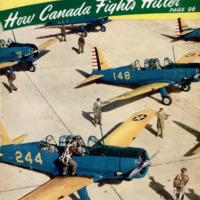 Popular Science Monthly, v. 140, n. 1, 1942
Popular Science Monthly, v. 140, n. 1, 1942

